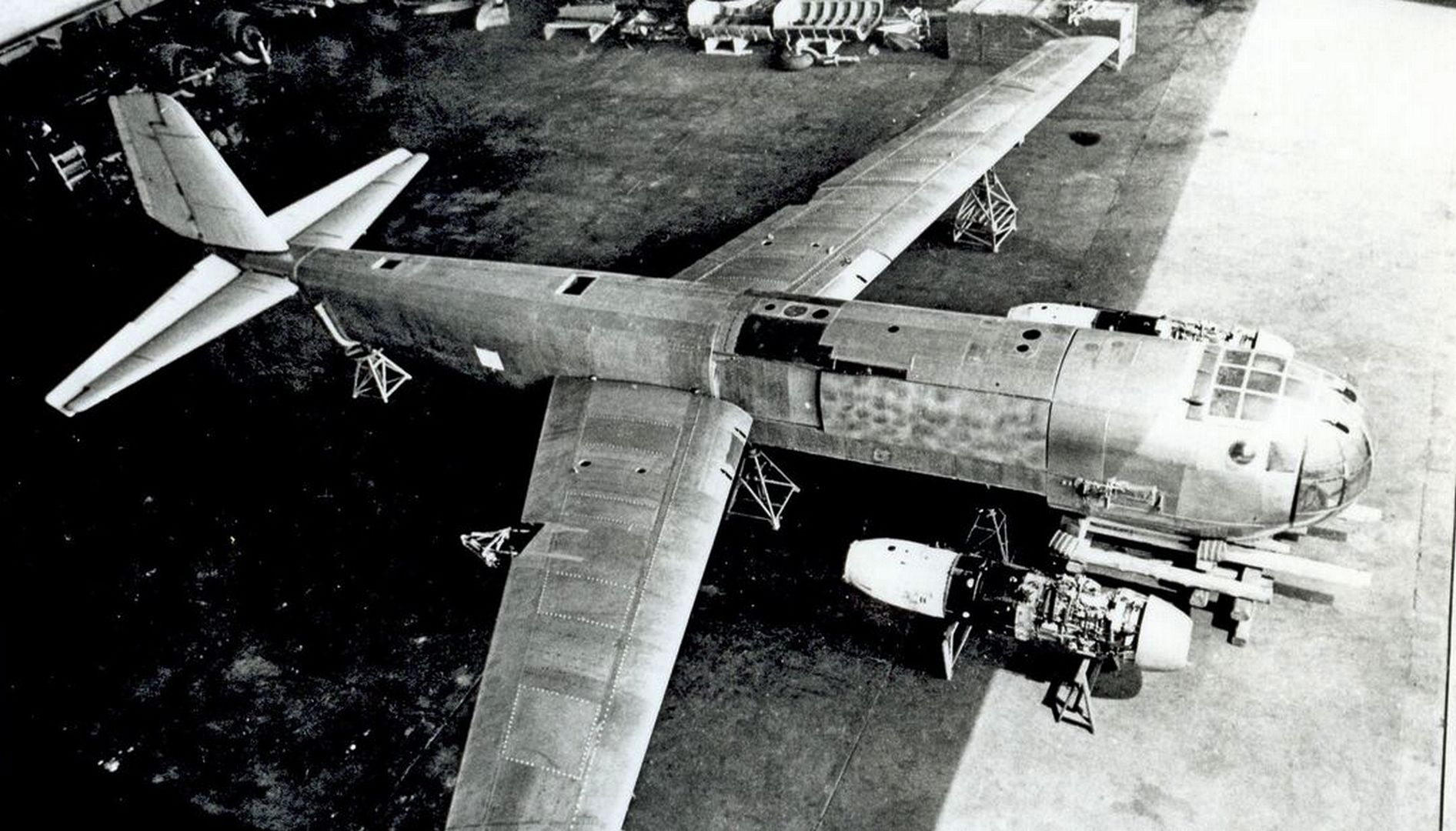Junkers Ju 287: 80 Years of the First Jet Aircraft with Forward-Swept Wings

On August 8th, it was 80 years since the first jet aircraft in the world with forward-swept wings, the Junkers Ju 287, was created. On that day in 1944, its maiden flight took place in Germany.
This was a purely experimental model designated Ju 287 V1. It was built as part of a program to create a new generation of bombers for the Luftwaffe, which, due to high speed, could easily evade interception by the fighters of the anti-Hitler coalition countries. The unusual wing design was proposed by the project's chief designer, Hans Wocke. Primarily, he sought to improve the aircraft's takeoff, landing, and maneuvering capabilities, as this type of wing performed better at high angles of attack than conventional wings. To save time and resources, components from other aircraft were used for the V1, such as the fuselage from the heavy bomber He 177. The landing gear was simplified and did not retract, with wheels taken from downed American B-24 bombers.
The Ju 287 was equipped with four Jumo 004B-1 turbojet engines, each with a thrust of nearly 900 kgf. Two of them were mounted under the nose section of the fuselage, and two under the wings. The aircraft had a length of 18.30 meters, a wingspan of 20.11 meters, and a maximum takeoff weight of 20 tons. According to calculations, the maximum speed of the bomber in a serial configuration was expected to exceed 850 km/h. Unsurprisingly, with the landing gear down during tests, it achieved significantly less—558 km/h.
The aircraft completed 17 successful flights. Overall, these flights confirmed the developers' best hopes. However, they also revealed one of the main drawbacks of the innovative wing—twisting at high speeds. They planned to address this by increasing the wing's rigidity and mounting all engines under it.
A second experimental model, the V2, was almost completed, also using components from other aircraft. Work was underway on two more machines. However, in September 1944, the Ju 287 program was discontinued in favor of other jet aircraft already in serial production. Unexpectedly, in March 1945, the Nazis decided to revive the Ju 287 program and even attempted to quickly start mass production, but the collapse of the Third Reich put an end to these plans.
The fate of the V1 model remains unclear. Some researchers claim that it was destroyed by the Germans themselves, while others believe it was bombed by Allied aviation. The unfinished V2, along with Hans Wocke and his design team, ended up in the Soviet occupation zone and were taken to the USSR.
Since then, various countries have periodically shown interest in high-speed aircraft with forward-swept wings. However, only the German business jet HFB-320 Hansa Jet, whose chief designer was Hans Wocke after his return from the USSR, was brought to serial production.

 Fan-page
Fan-page Youtube
Youtube TikTok
TikTok Aviamuseum
Aviamuseum State Aviation Museum
State Aviation Museum

